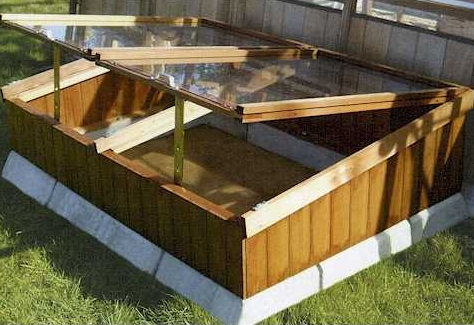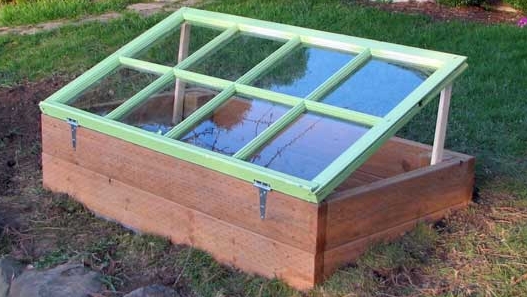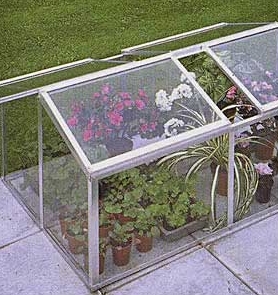Categories
Calendars
Guides
Reviews
Archive
Gallery
Articles
Ask Our Gardening Expert
Your weather dates have not been set. They have defaulted to medium settings.
Click here to set the weather dates to your area of the UK or USA.
Cold frames provide a controlled environment in a small space and their usefulness is too often overlooked. The temperature difference between inside and out may only be a few degrees but that could be crucial for success at either end of the year or producing a crop in a cool climate.
Like its bigger relative, the greenhouse, radiant energy enters, heating the interior, which warms and is retained by the glass. A cold frame has a number of uses in addition to a greenhouse, in confined gardens or where occupiers are transient, taking it with them when they leave.
Overwintering plants
Frost tender plants can be retained for the following year by cutting them back and placing them in a sunken cold frame for the winter months. Plants may not continue to grow, instead they will undergo a mild dormancy and be ready to resume growth at a more advanced stage, when temperatures are high enough for processes to start. Pot the plants in containers and pack them as close together as possible. A tight mass will be less vulnerable to low temperatures. Water well and cover the soil with mulch for added insulation.
A useful cold frame made of recycled timber and an old window casement
Starting Seedling
A cold frame allows you start your planting a few weeks early. Start with cool climate plants with lower germination temperatures. If you are sowing seed directly into the soil, leave a new cold frame for a time to allow the soil inside to warm up. Soil inside a cold frame will dry out more quickly, so watering has to be maintained. On warm days, make sure the vents are opened.
Hardening off
When plants are moved from the warmth of the greenhouse, a cold frame makes a good transition between greenhouse and garden to gradually acclimatise them to new conditions. The process can be regulated by opening and closing the top according to the day and night time temperature.
Types of cold frame
Cold frames with clear glass or plastic sides as well as glazed frames. The frames that hold the glass are called ‘lights’. Timber and brick can be used for the sides. Hinged lights with secure stays are better for the amateur gardener than those which slide. High winds and rain may damage plants or even the cold frame whilst the owner is away.
Glass and metal frames are good transmitters of light
Brick frames can be made at home. Concrete blocks can be bought cheaply or recycled and the lights made to fit. Brick and block are excellent heat retainers and insulators.
Concrete blocks retain heat well and can be used to raise the level to accommodate taller plants
Horticultural glass is the best glazing material, transmitting light and retaining heat far better than plastic. Cracked panes should be replaced immediately and glass washed down frequently. If there are children or animals near, plastic may be safer.
Timber frames are difficult to come by these days but can be easily made from secondhand timber. Recycled scaffolding planks are excellent and timber sides retain heat and insulate well. Irrigation pipe can be easily fixed to timber.
Aluminium and galvanised steel frames are popular. They are light, easily assembled and allow a larger amount of light to enter. They may be not as strong and do not have such good insulation qualities.
Size
The minimum practical size is 60 cm X 120 cm. Choose the largest size possible to fit the space available, though a small frame is better than none. The height should be greater than the largest plants and can be increased by standing the frame on blocks.
Insulation
The frame must be draught proof. There must be no gaps around the glass or framework. Sheets of expanded polystyrene or old carpet or sacking can be used in very cold weather, removing it by day.
Ventilation
Good ventilation is essential. Most frames have lights that slide away or are hinged and can be wedged open. Ventilation allows an interchange of gases and removes moisture, reducing the possibility of fungal diseases.

